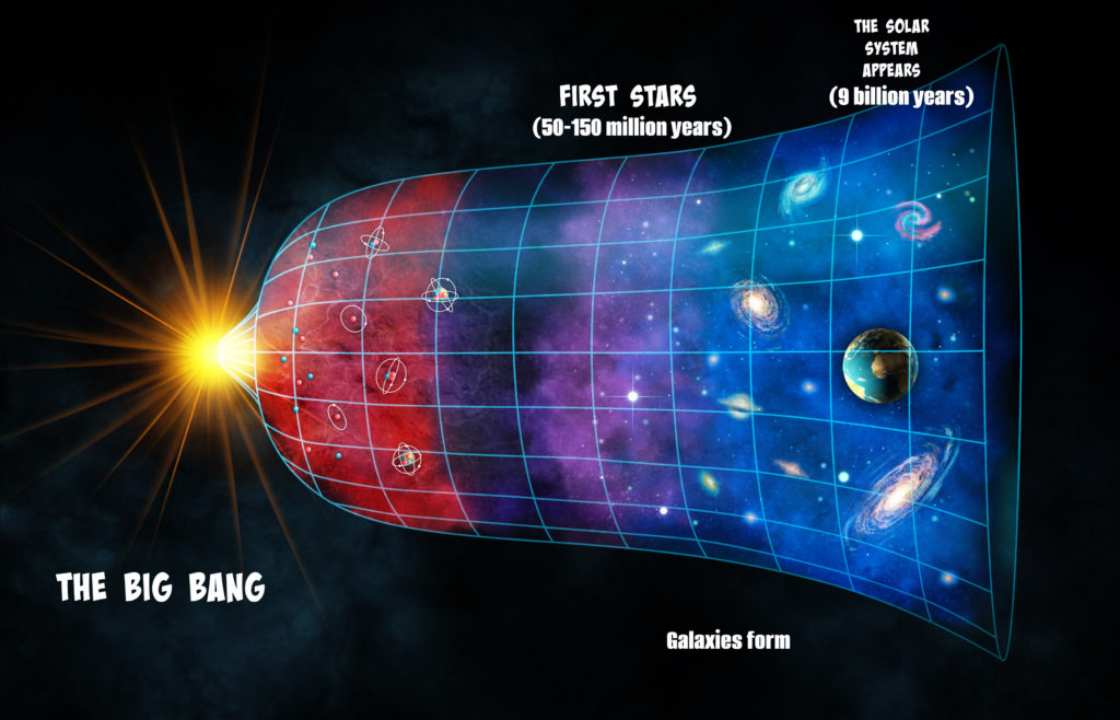A Kansas State University engineer recently published results from an observational study in support of a century-old theory that directly challenges the validity of the Big Bang theory.
Lior Shamir, associate professor of computer science, used imaging from a trio of telescopes and more than 30,000 galaxies to measure the redshift of galaxies based on their distance from Earth. Redshift is the change in the frequency of light waves that a galaxy emits, which astronomers use to gauge a galaxy’s speed.
Shamir’s findings lend support to the century-old “tired light” theory instead of the Big Bang. The findings are published in the journal Particles.
“In the 1920s, Edwin Hubble and George Lemaitre discovered that the more distant the galaxy is, the faster it moves away from Earth,” Shamir said. “That discovery led to the Big Bang theory, suggesting that the universe started to expand around 13.8 billion years ago. At around the same time, preeminent astronomer Fritz Zwicky proposed that galaxies that were more distant from Earth did not really move faster.”
Zwicky’s contention was that the redshift observed from Earth is not because the galaxies move but because the light photons lose their energy as they travel through space. The longer the light travels, the more energy it loses, leading to the illusion that galaxies that are more distant from Earth also move faster.
“The tired light theory was largely neglected, as astronomers adopted the Big Bang theory as the consensus model of the universe,” Shamir said. “But the confidence of some astronomers in the Big Bang theory started to weaken when the powerful James Webb Space Telescope saw first light.
“The JWST provided deep images of the very early universe, but instead of showing an infant early universe as astronomers expected, it showed large and mature galaxies. If the Big Bang happened as scientists initially believed, these galaxies are older than the universe itself.”
While new imaging casts doubt on the Big Bang, Shamir’s study used the constant rotational velocity of the Earth around the center of the Milky Way to examine the redshift of galaxies that move in different velocities relative to Earth and to test how the change in the redshift responds to the change in velocity.
“The results showed that galaxies that rotate in the opposite direction relative to the Milky Way have lower redshift compared to galaxies that rotate in the same direction relative to the Milky Way,” Shamir said. “That difference reflects the motion of the Earth as it rotates with the Milky Way. But the results also showed that the difference in the redshift increased when the galaxies were more distant from Earth.
“Because the rotational velocity of the Earth relative to the galaxies is constant, the reason for the difference can be the distance of the galaxies from Earth. That shows that the redshift of galaxies changes with the distance, which is what Zwicky predicted in his Tired Light theory.”
Reference: Lior Shamir, An Empirical Consistent Redshift Bias: A Possible Direct Observation of Zwicky’s TL Theory, Particles (2024). DOI: 10.3390/particles7030041

The “Tired Light” Theory and the Big Bang are not mutually exclusive.
The observations do not support a tired light theory because the galaxies are old and mature. If it took their light longer to reach the telescope, then the galaxies would appear to be smaller, dimmer and younger than our galaxy at that distance. Assuming the light took longer to reach the telescope makes the problem worse.
Old massive galaxies further than 14 billion light years away indicates the age of the universe, big bang singularity, rapid cosmic inflation, Hubble constant, general relativity’s look-back time, speed of light, thermodynamics, and the evolutionary LCDM model of the universe are all wrong. Why do you think astronomers called them universe breakers or the impossible early galaxy problem? It’s because they refute all the theories and model used to explain how the universe evolved over 13.8 billion years.
Tired light can’t explain why galaxies at the edge of the observable universe are bright, massive and contain a supermassive black hole, some are more than 20 times larger than the supermassive black hole in the center of our own galaxy.
Regardless if the tired light theory or redshift is why the galaxies seem to be so far away, neither theory can explain why the galaxies at that distance appear to be older and larger than the Milky Way galaxy.